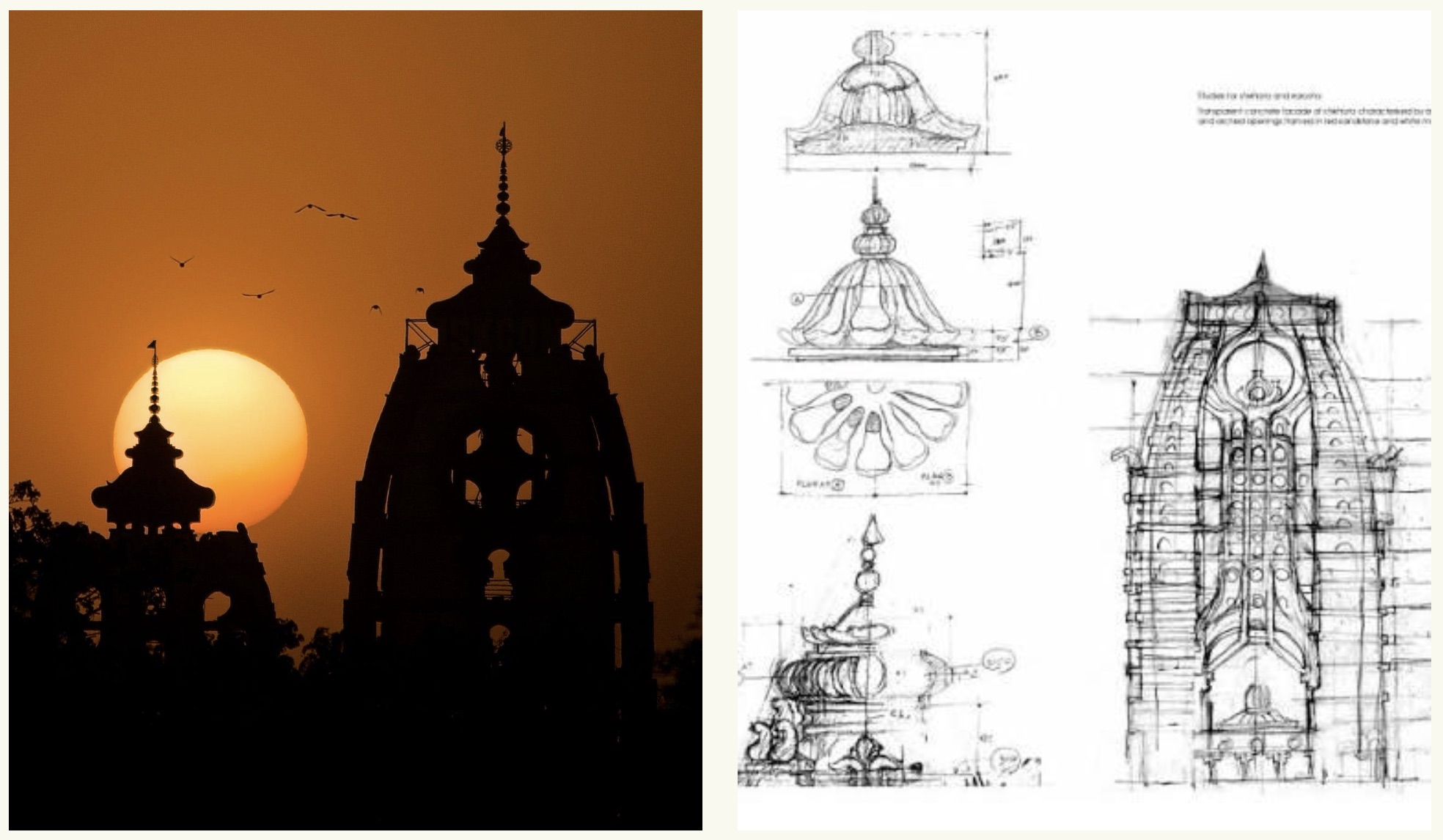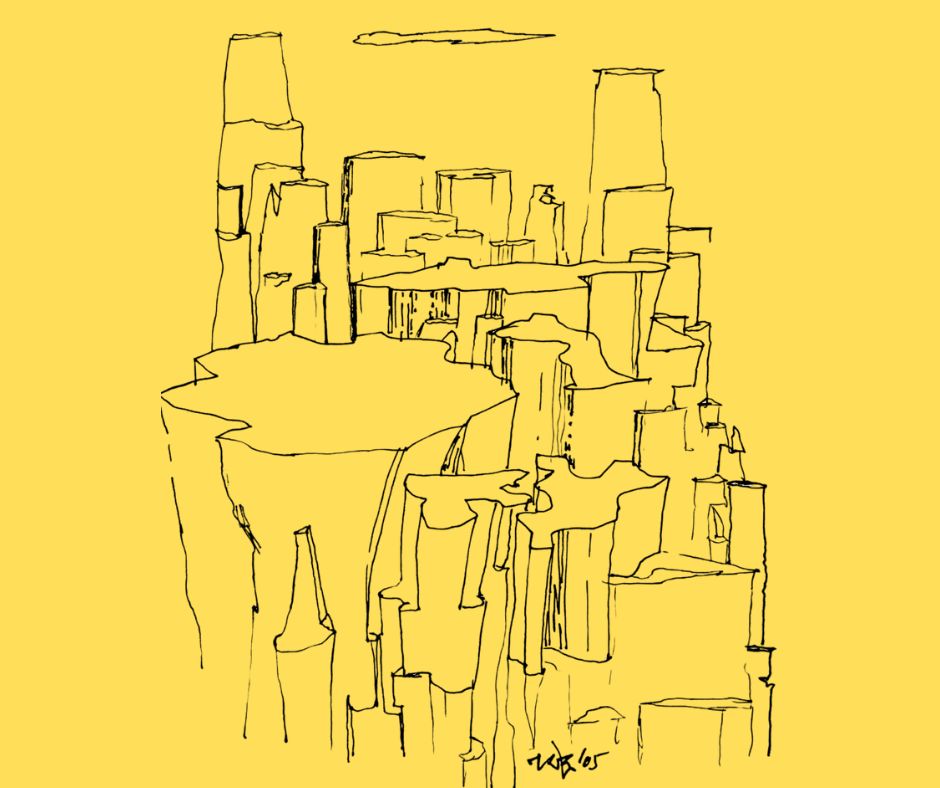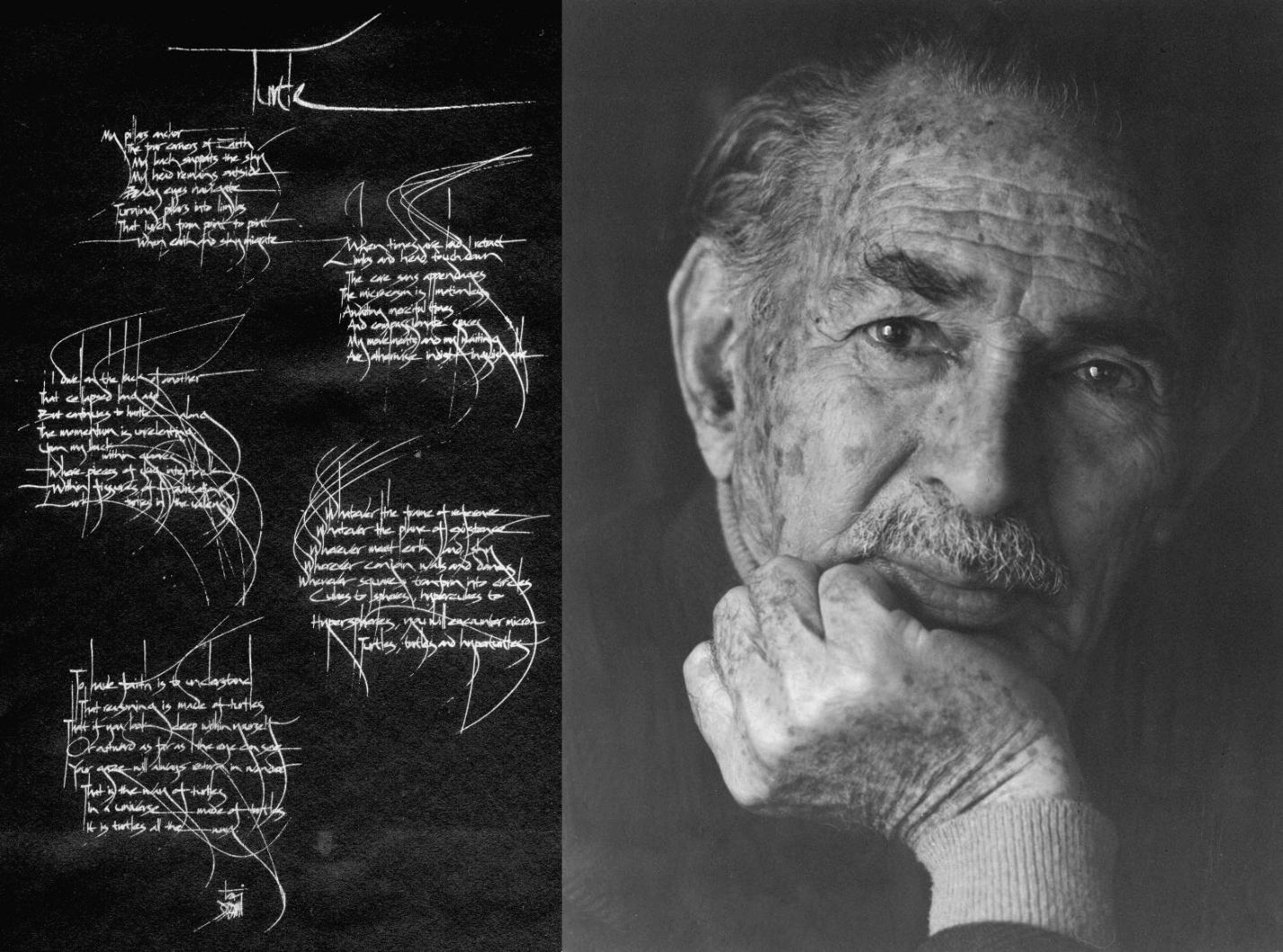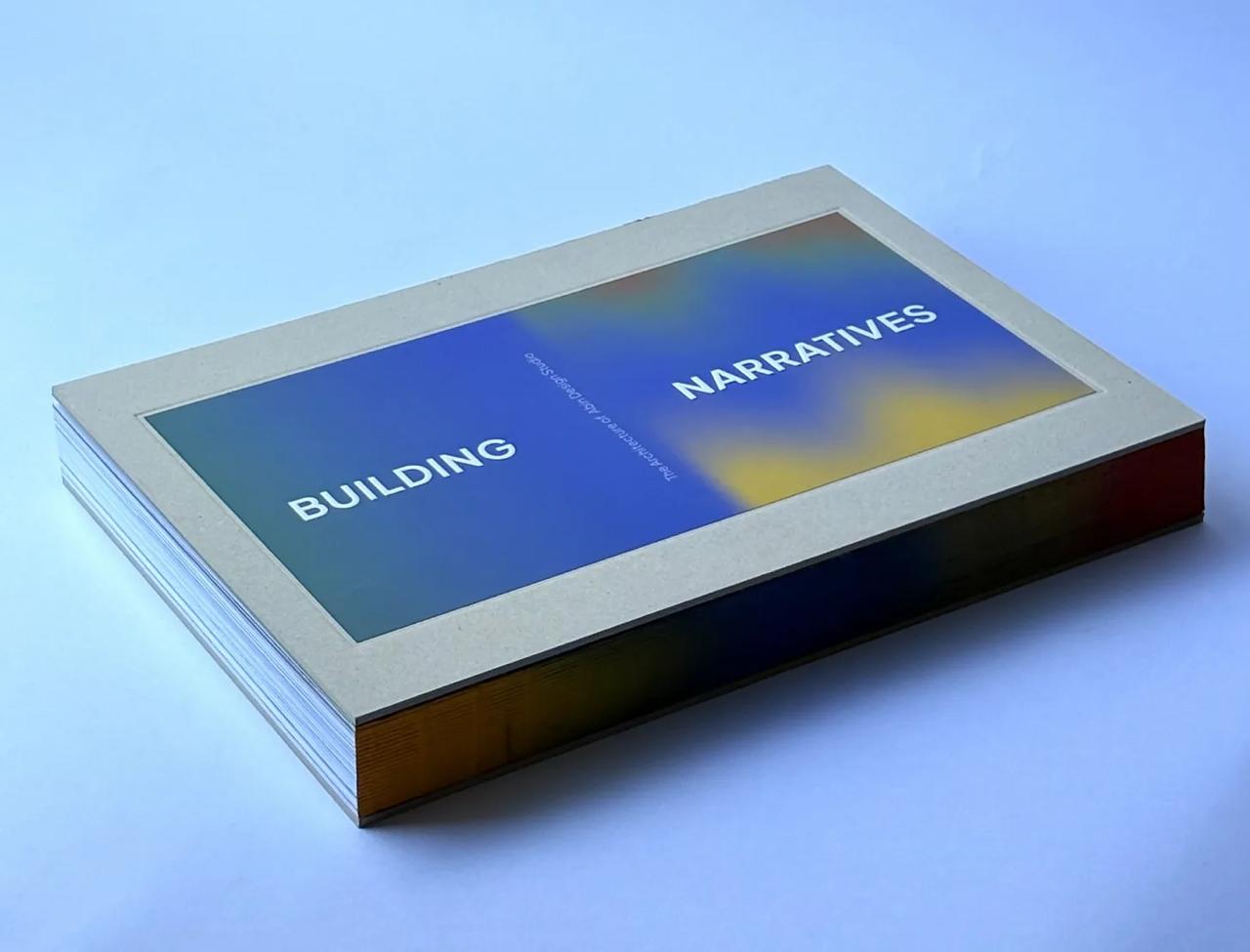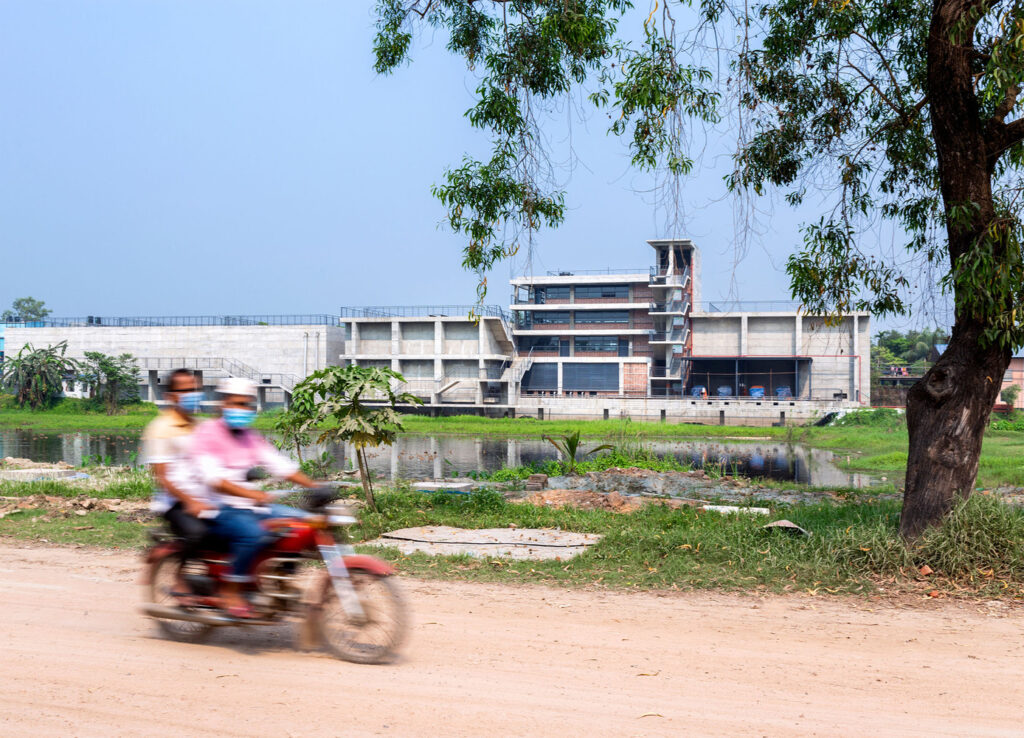
The Effluent Treatment Plant (ETP) is a part of a Ready-Made Garments (RMG) complex of Reefat Garments, in a brownfield site banked by the river Shitalakhya. Muslin Cotton Mills was a state-owned industry established during the 1950s that was auctioned off to a private industrialist in 2013, to be redeveloped. The previous industrial presence had led to extreme groundwater depletion in the area as well as river pollution due to direct effluent discharge.
An ETP is conventionally considered to be unappealing due to the visual and olfactory discomfort caused by the effluent treatment process. Hence the client’s initial intention was to place it near the river and hide it away. The primary constraint was working against this predisposition of an ETP being purely function-driven and in turn, treating it as necessary but undesirable.
After considerable negotiation with the client, the architects were able to establish the significance of the ETP as an integral part of the complex. The architects insisted on reversing the water cycle to decrease the dependency on groundwater.
An integrated hydrologic system was thus proposed by collaborating with plumbing and hydrology experts, where water collected from the river and harvested rainwater will be stored and filtered naturally in water bodies, to be used in the production process.
Revival of an extinct dead canal within the site and introduction of an inaccessible forest strip aid in the natural filtration process while helping to restore the lost ecological balance. The effluent water from the production is then treated in the ETP. To guarantee the safety of the treated water, it is further stored and filtered naturally in a retention pond and subsequently released to the river via a metered and monitored connection.
The 400 m3 capacity ETP was made clearly visible and accessible from the site’s entry to demarcate its importance within both the industrial and ecological processes. The architects worked closely with the technical consultants to optimize the geometric configuration of the four-storied structure, resulting in a compact and efficient footprint.
The formal expression further exemplifies the ETP’s significance by translating references from its mechanical elements into a sculptural form. The water retention pond in front of the ETP not only filters and stores water but also adds to the visual impact of the form.
The utilization of repurposed and found materials was prioritized in the construction process. Rubble salvaged from the dismantled defunct buildings was used as aggregate for the concrete portions of the ETP.
Metal elements such as railings and window framings were designed to ensure the highest use of MS bars reclaimed from the old structures. The surplus need of metal was met by using recycled steel from local rerolling mills.
Gallery:
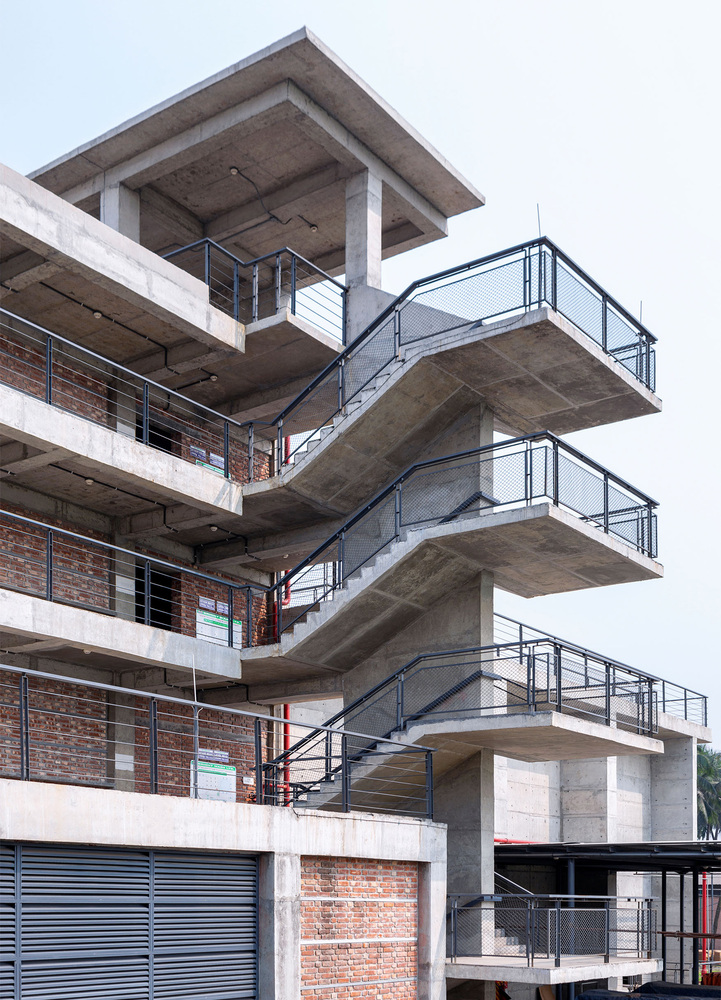


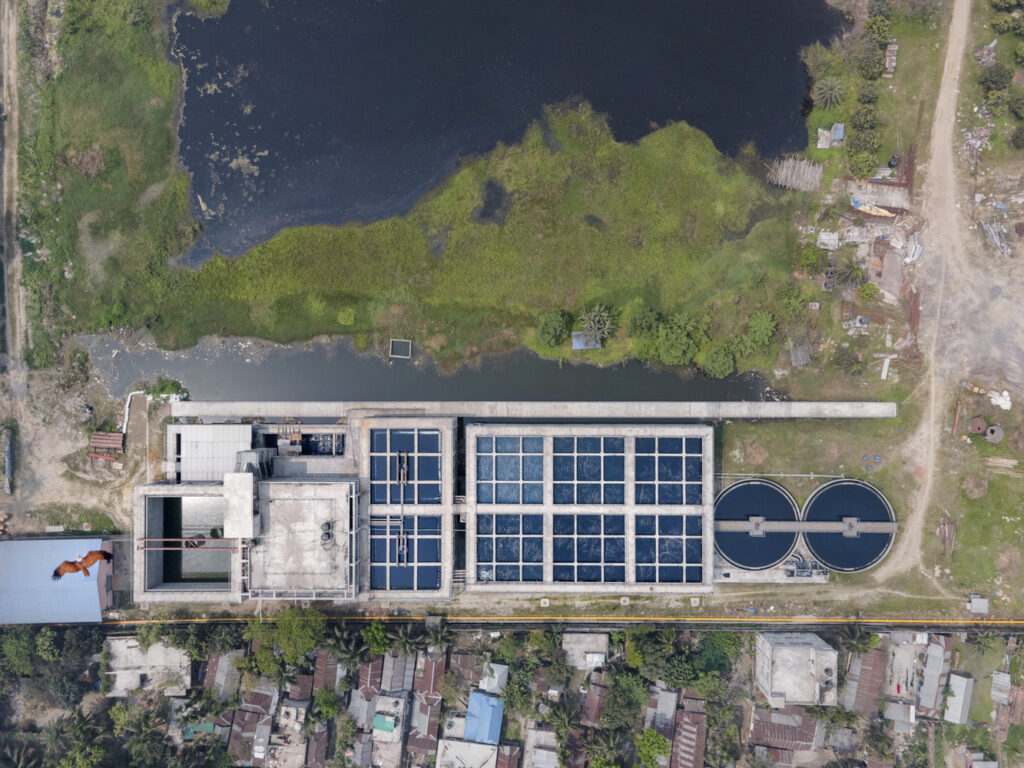
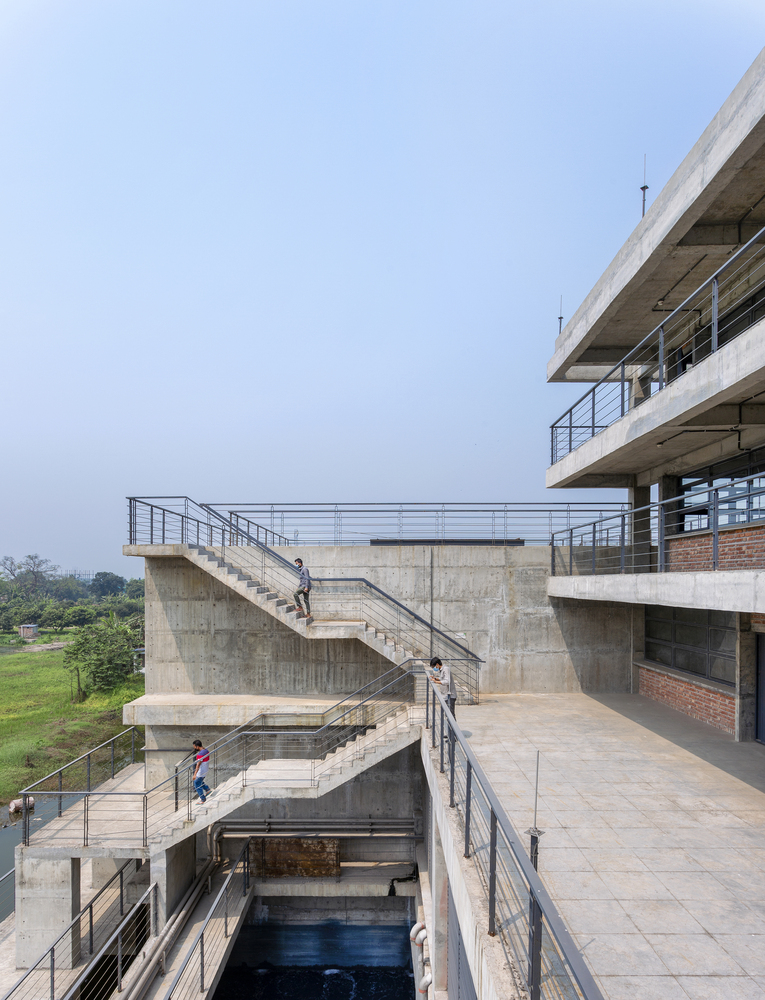
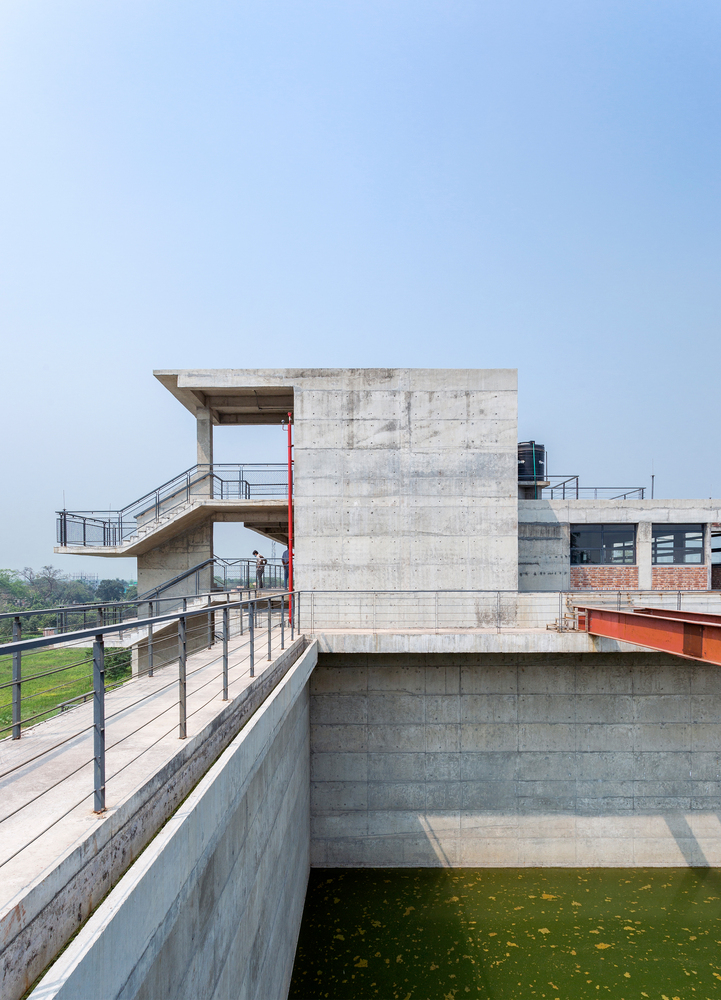

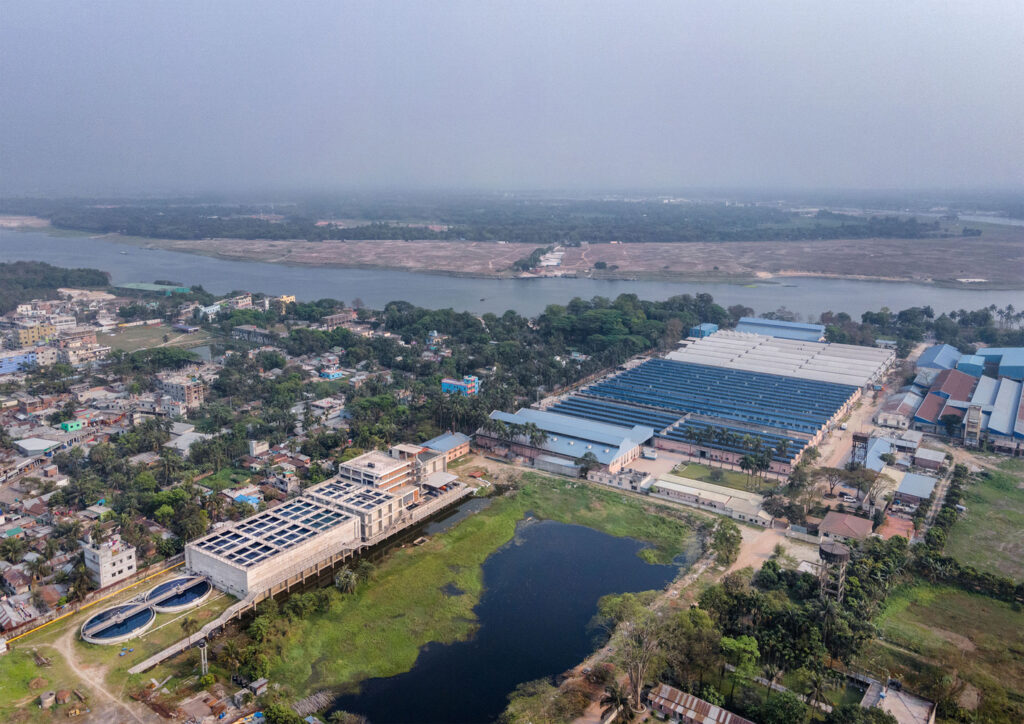

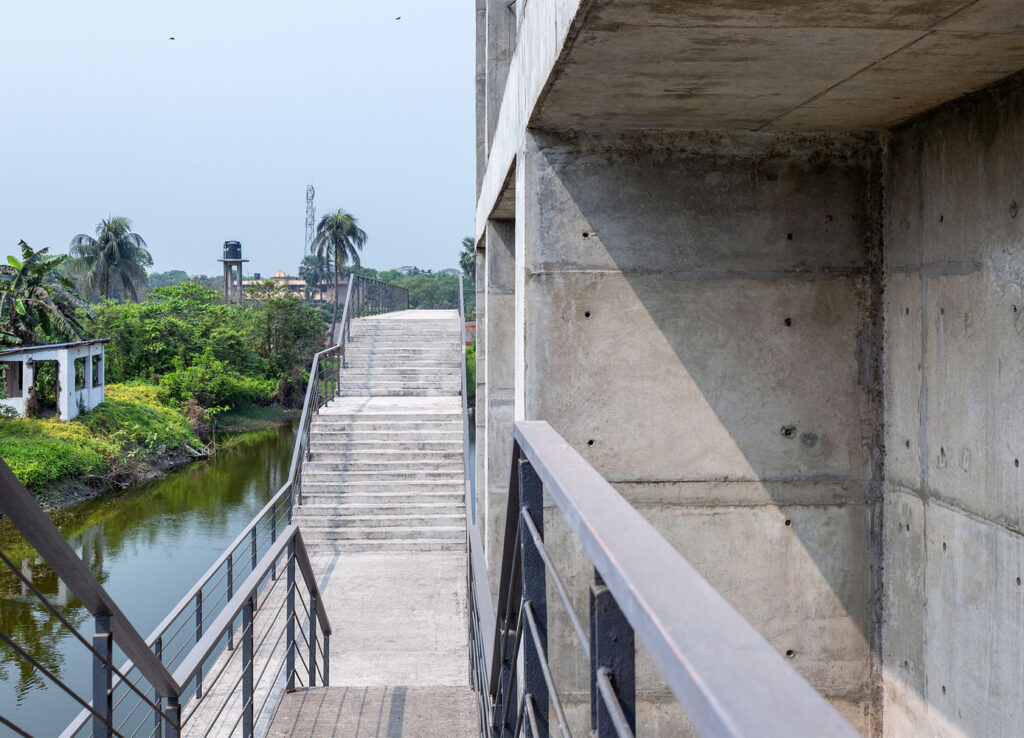

Drawings:
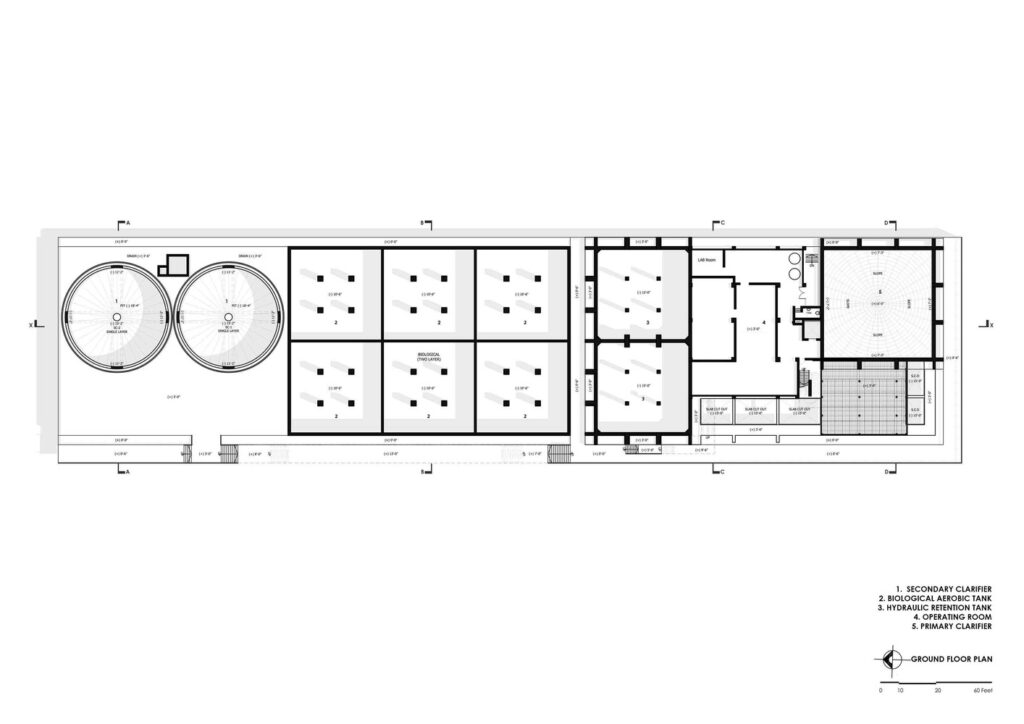
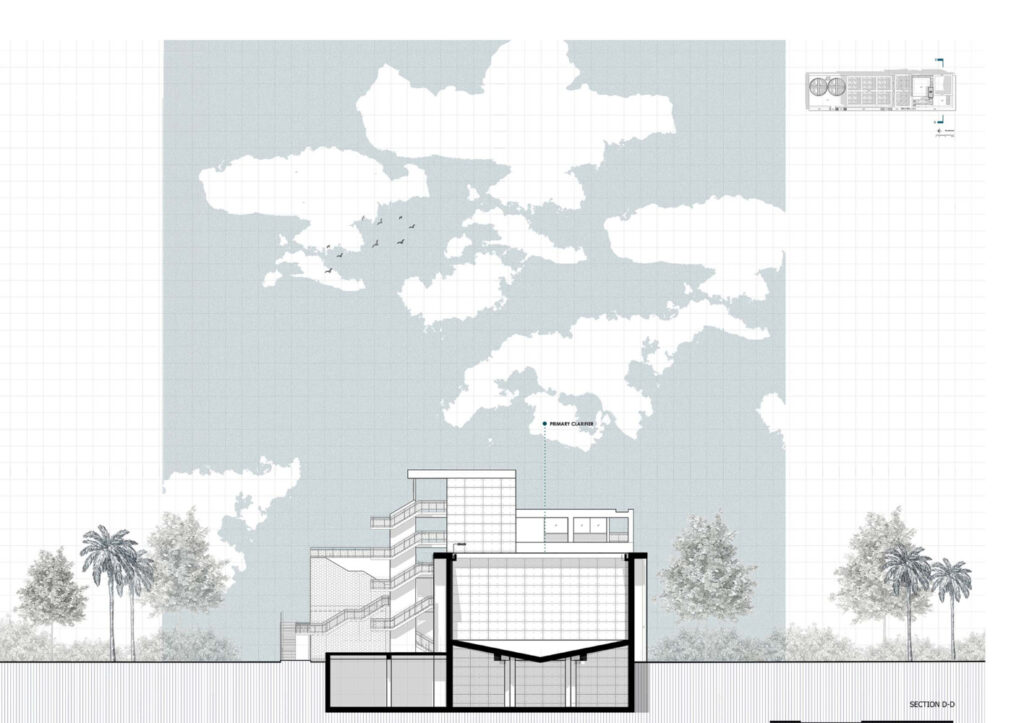

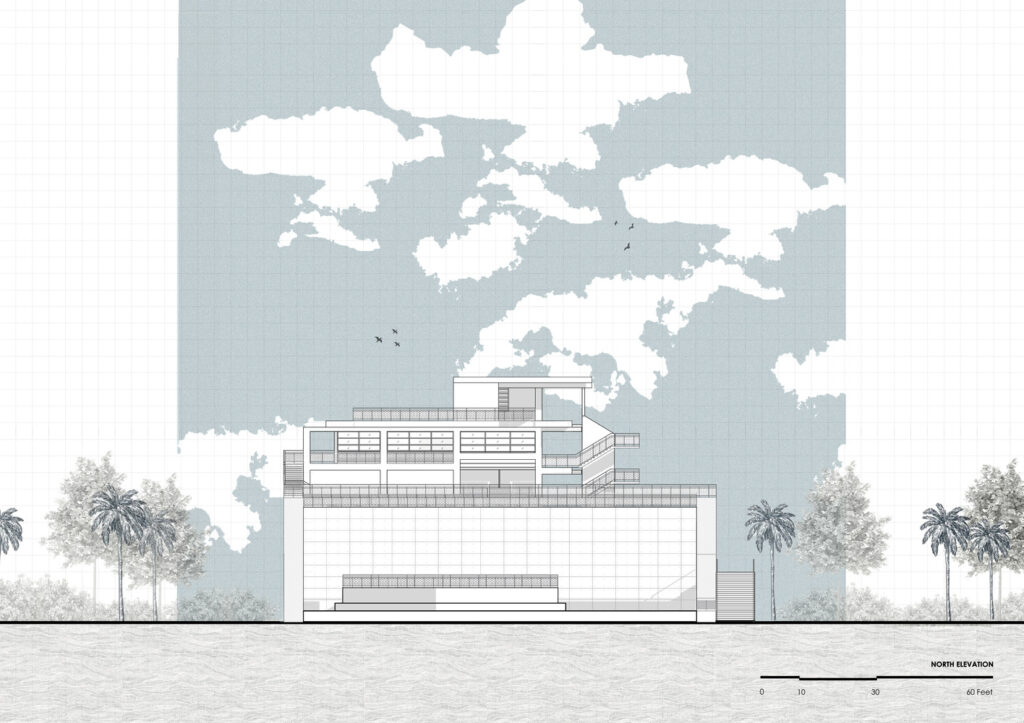
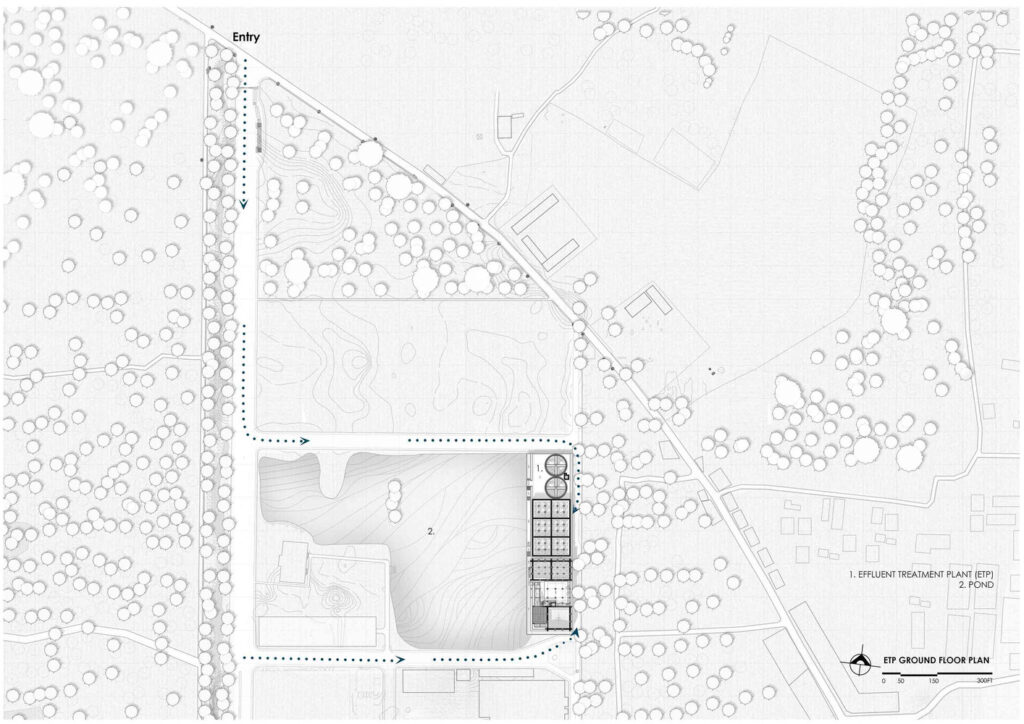
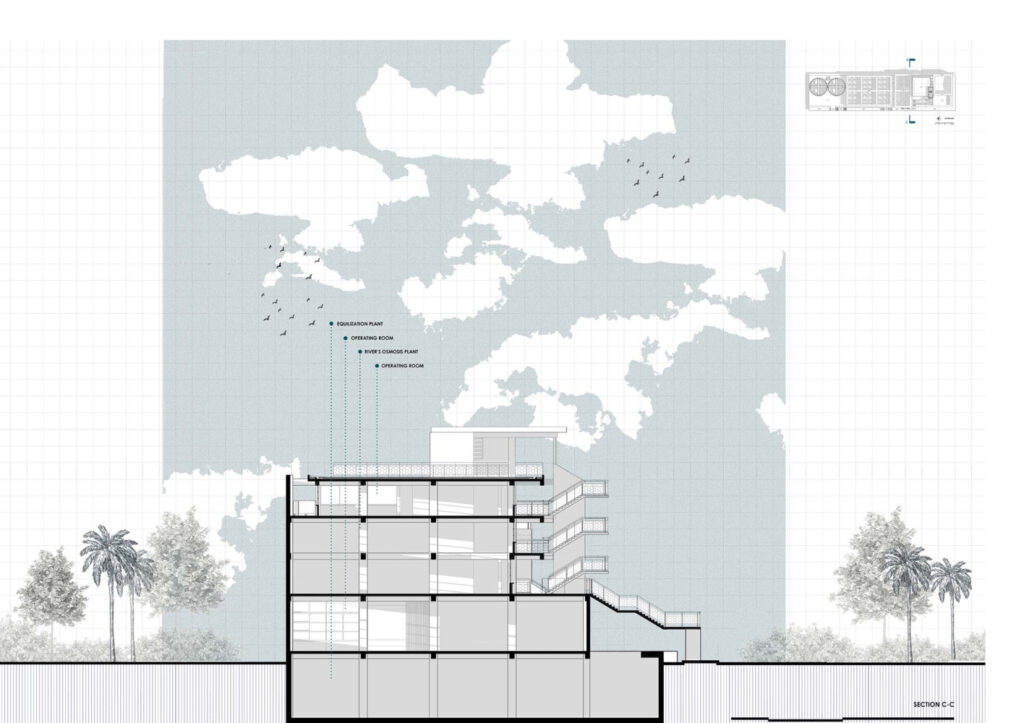
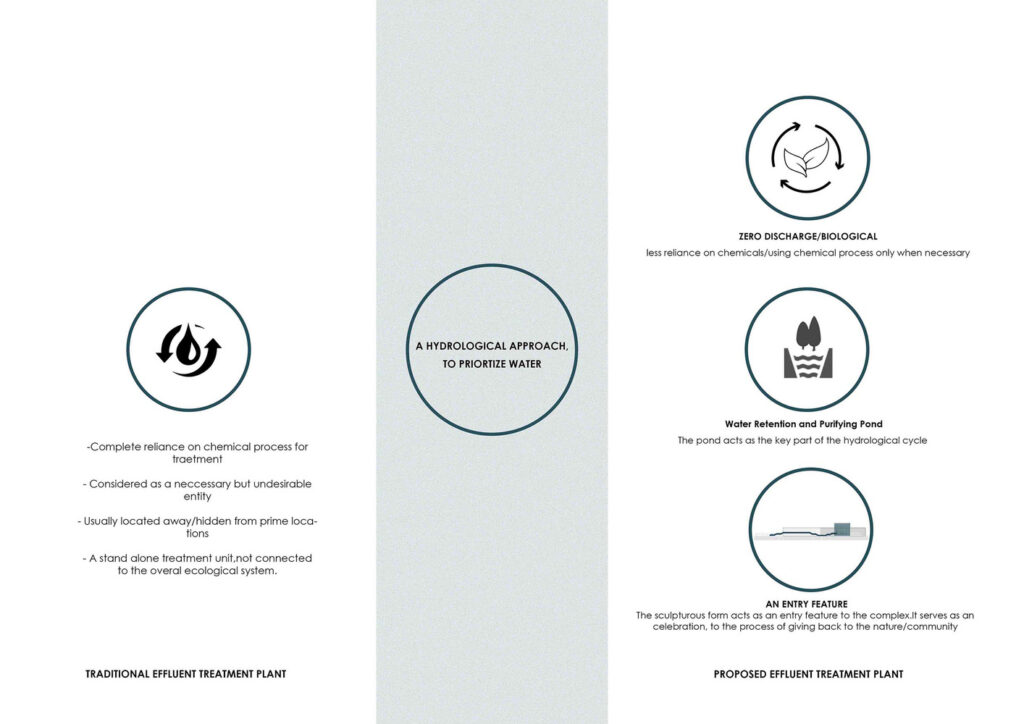

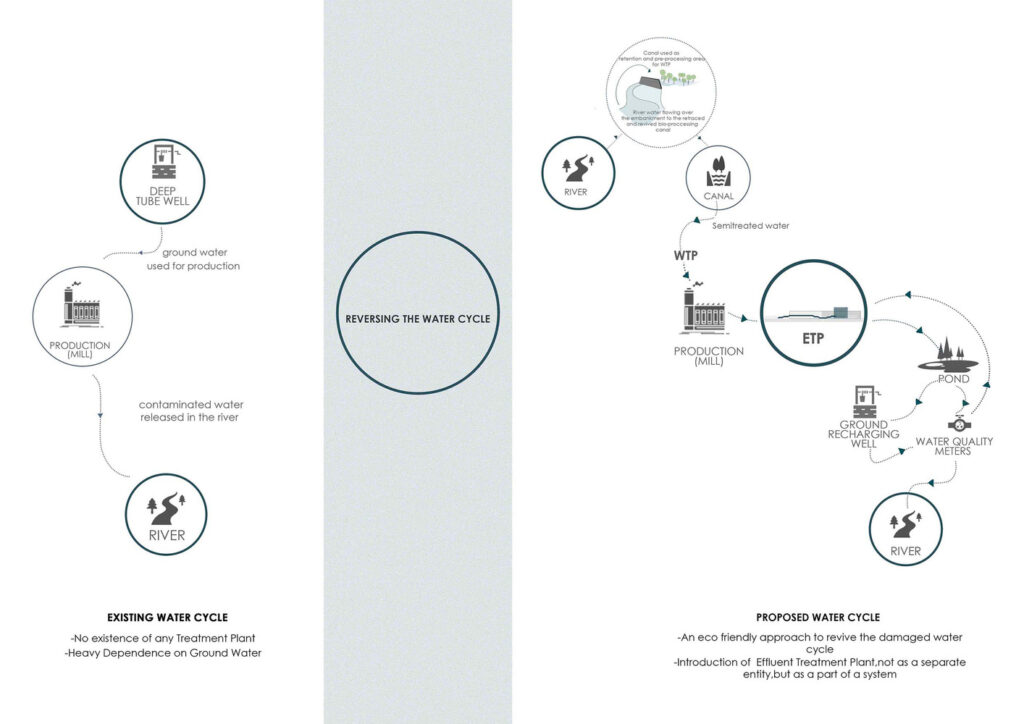
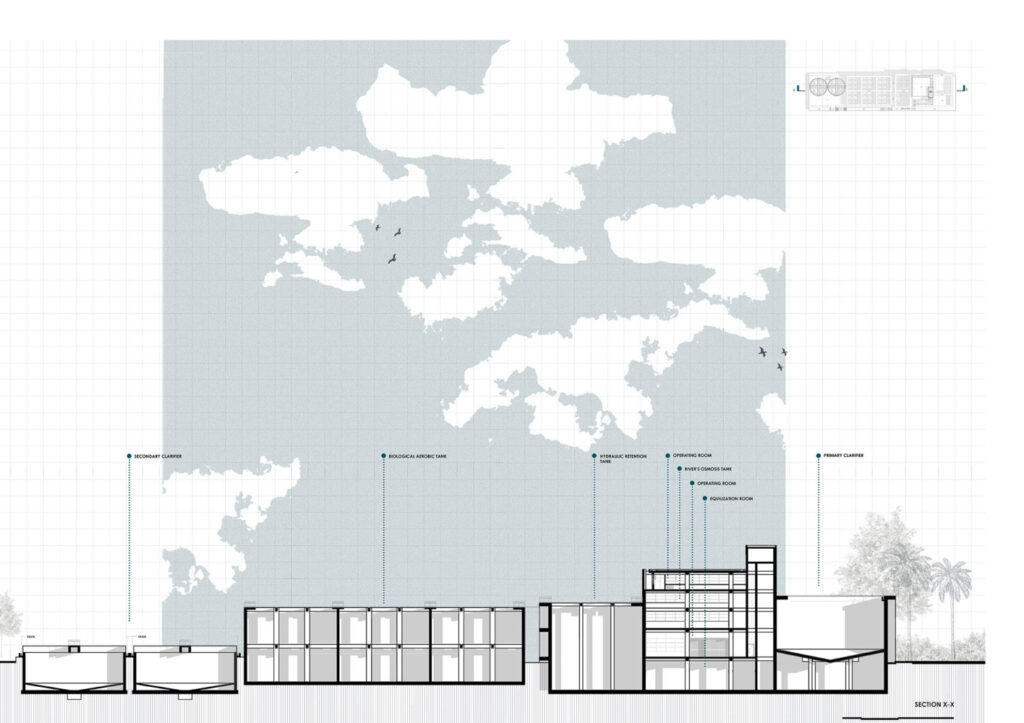
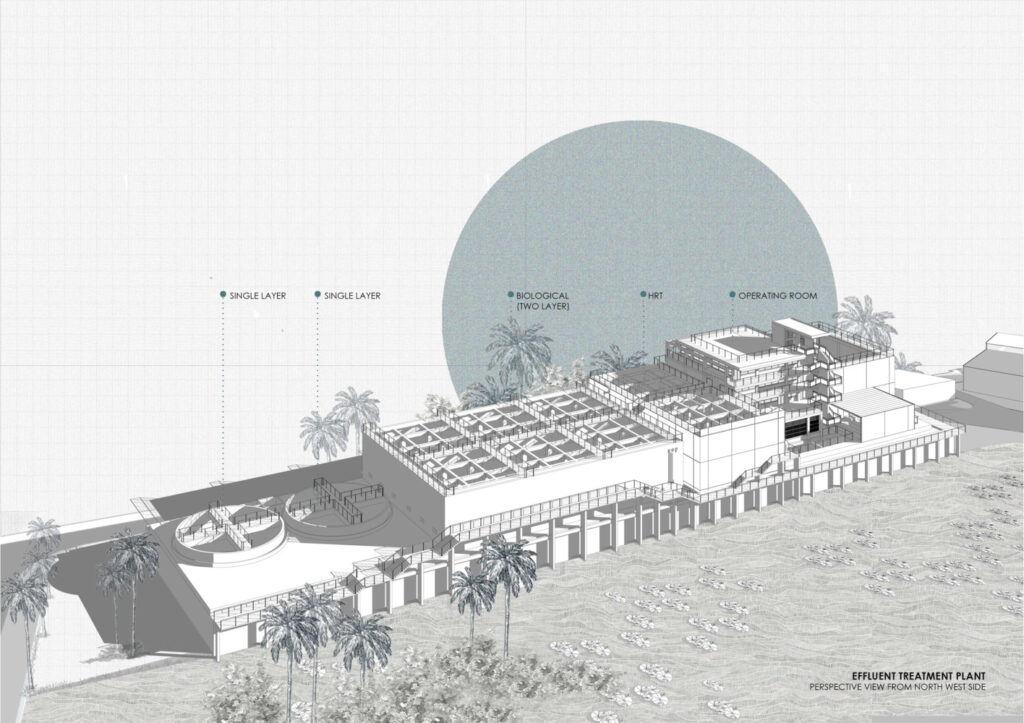
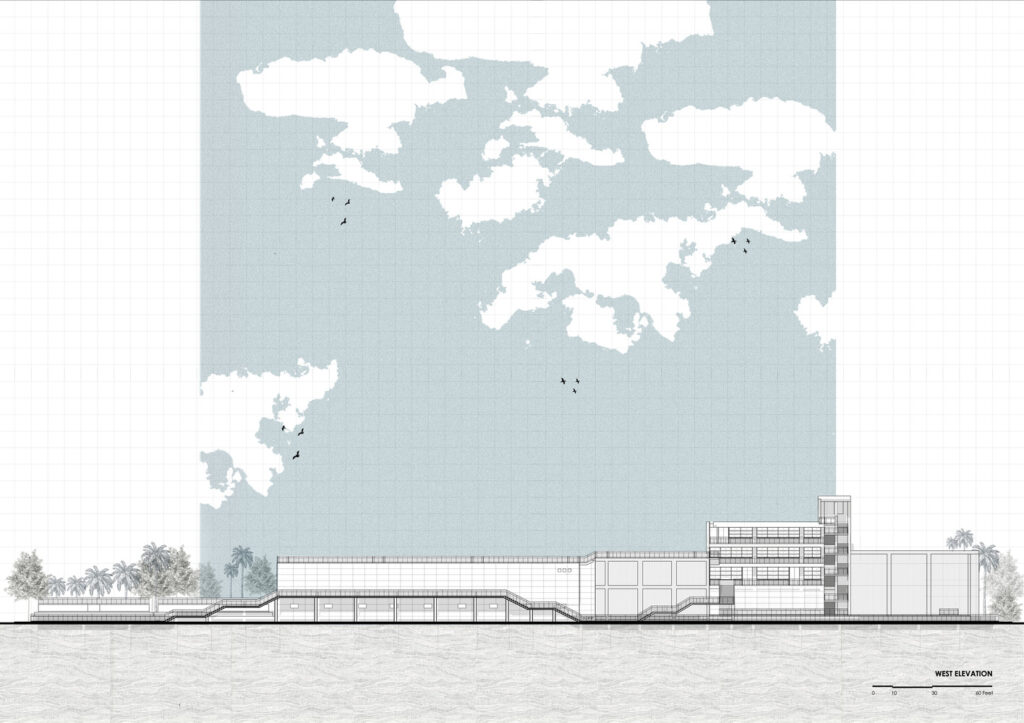
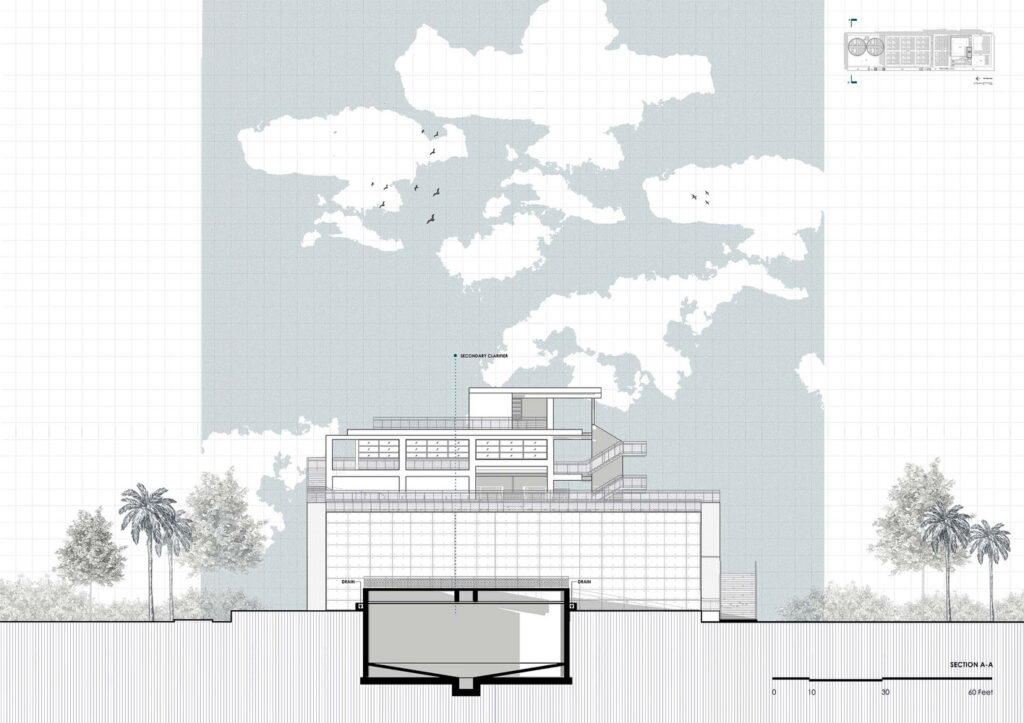
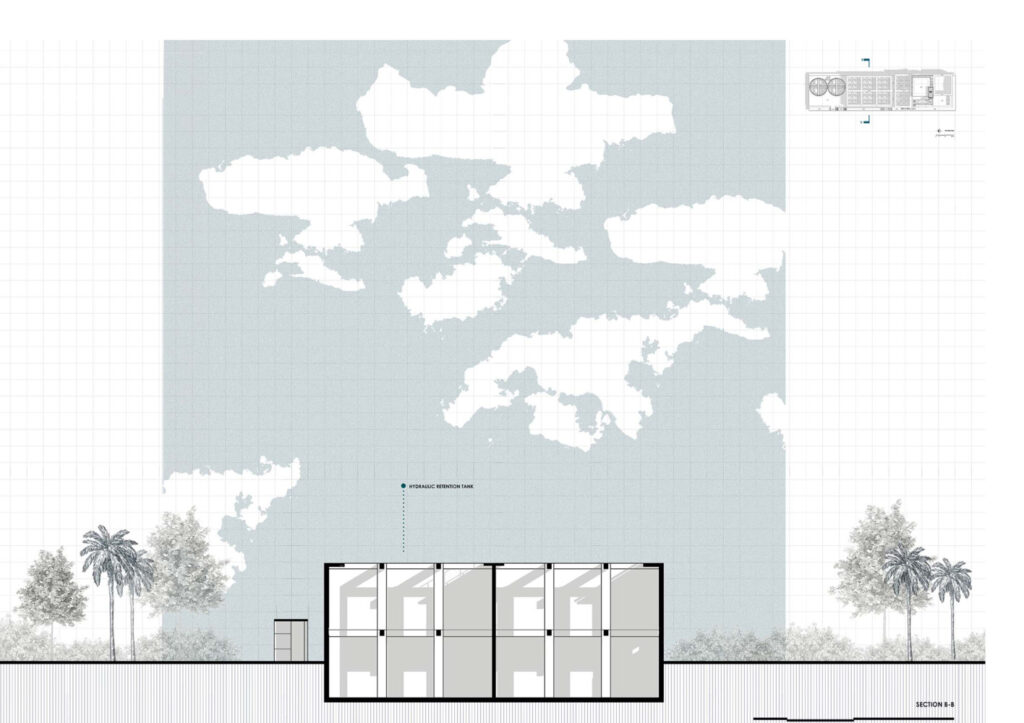
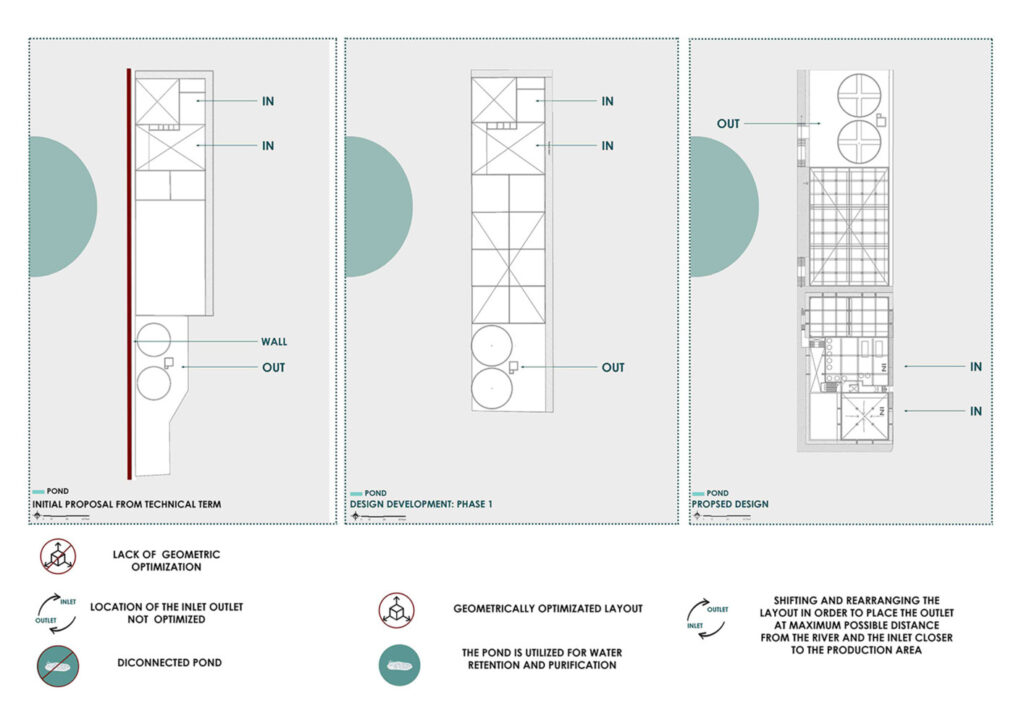
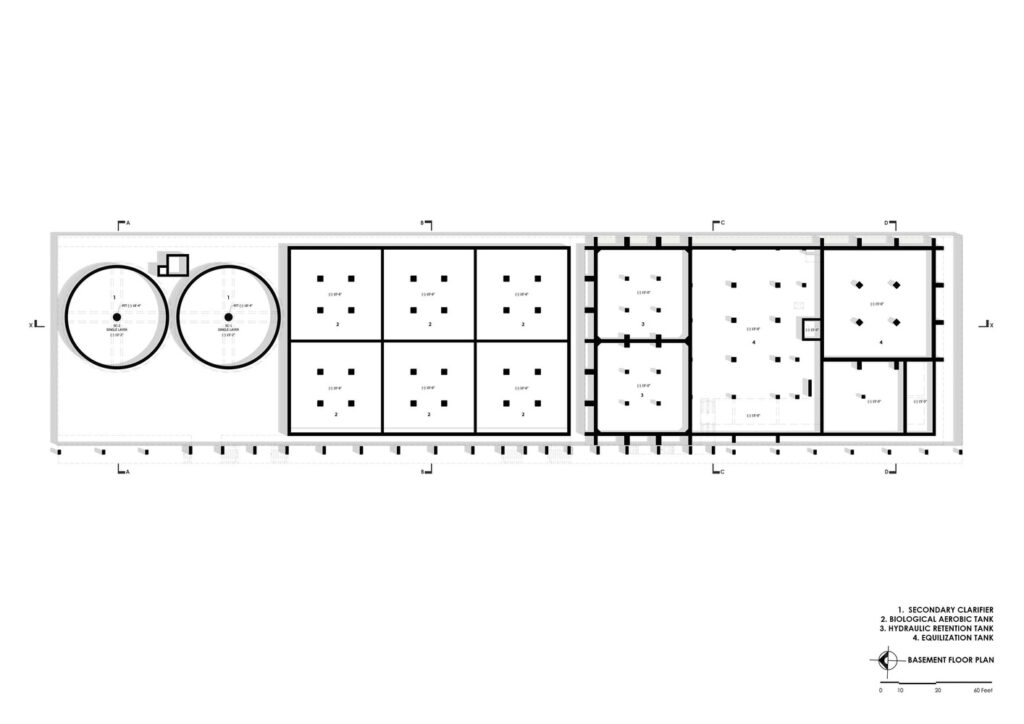


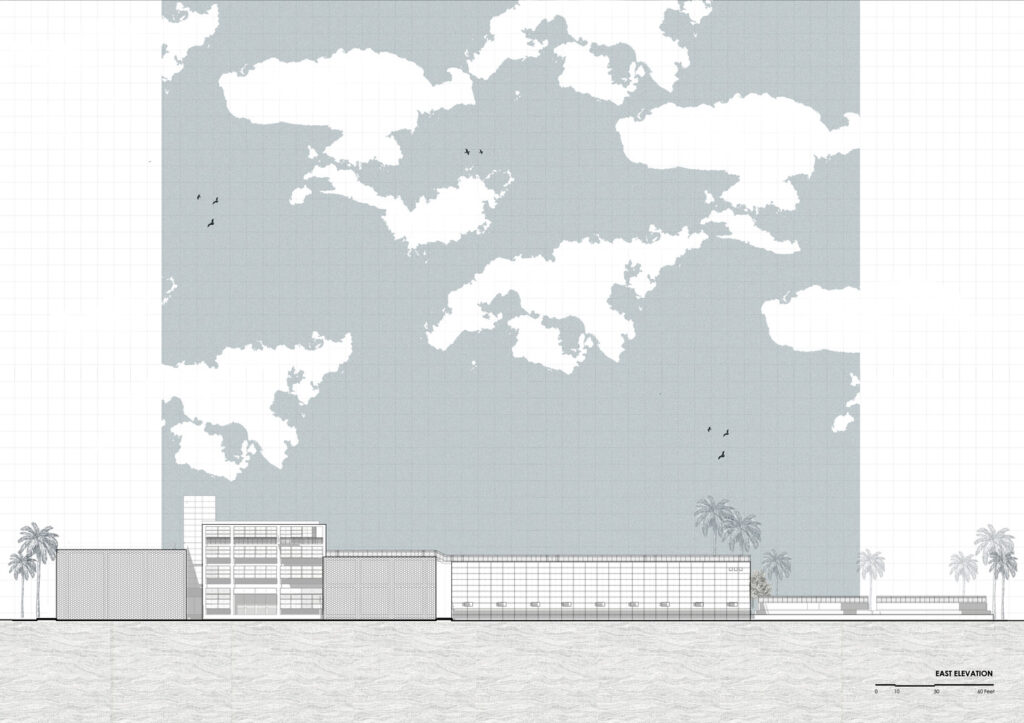
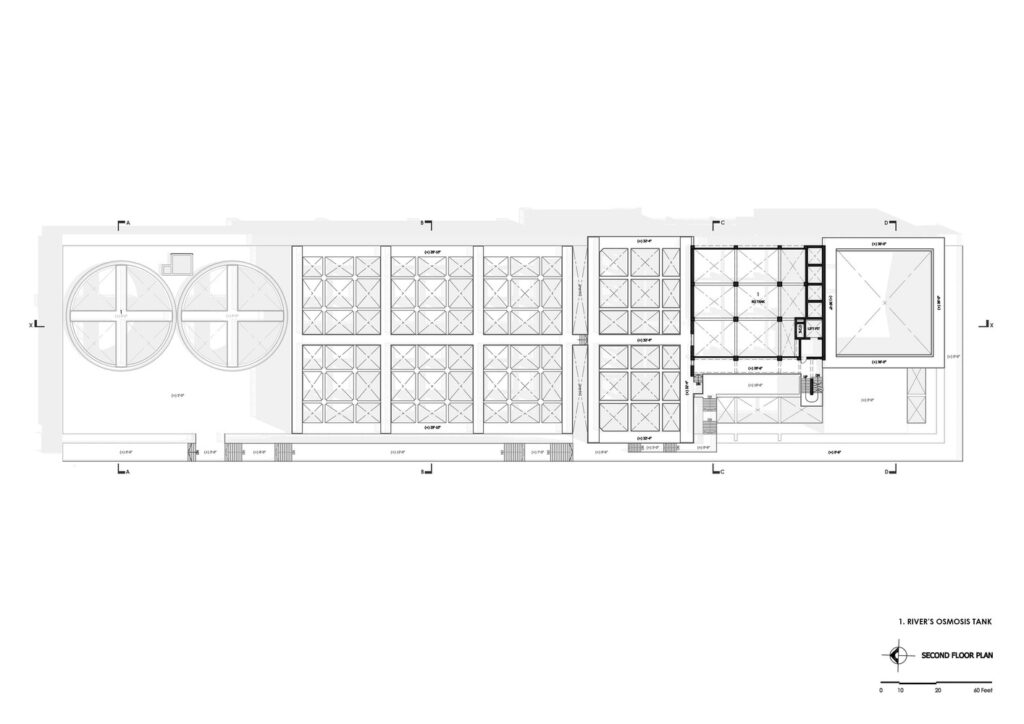
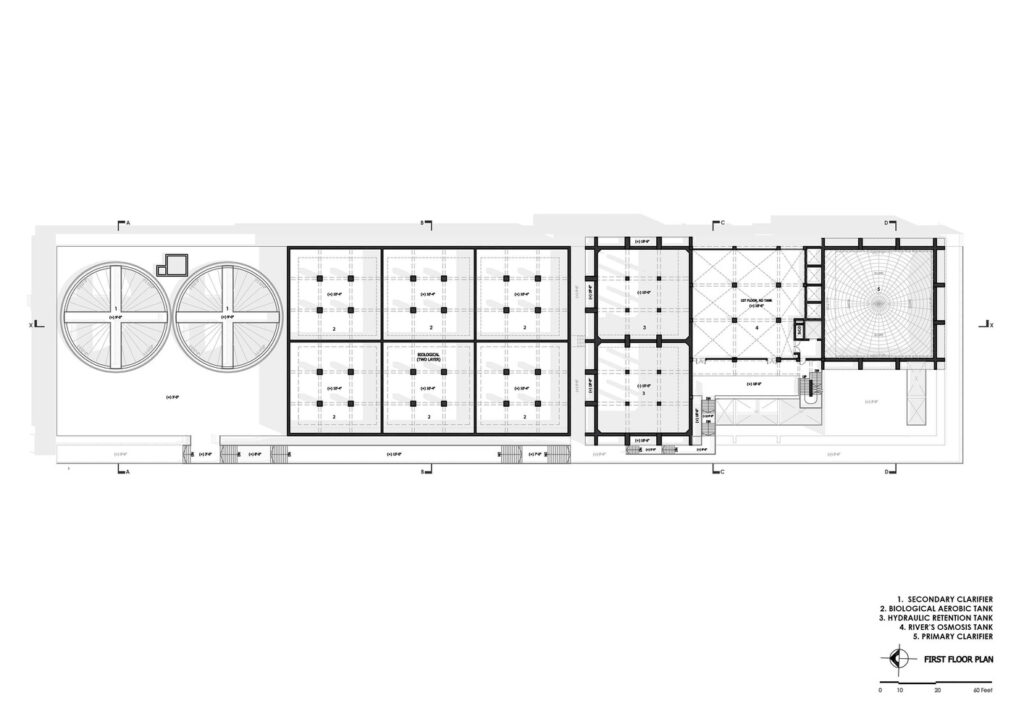
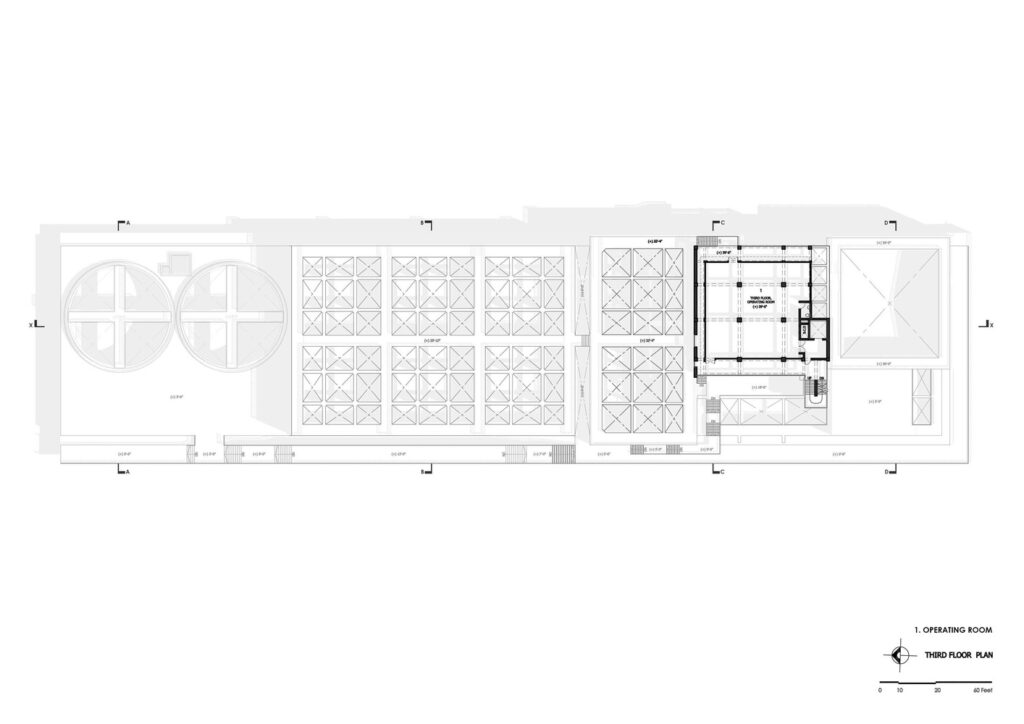
Project Details:
Name: Effluent Treatment Plant (ETP) for Reefat Garments
Location: Kaliganj, Bangladesh
Status: Completed (2019)
Typology: Industrial Architecture – Factory
Designed by: SILT
Area: 7153 sq. m.
Architects: Razib Hassan Chowdhury, Sumayia Binte Samad
Landscape Architect: Naheen Nuruddin
ETP Consultant: Akmol Hossein
Structure Engineer: Syied Mahbub Morshed
Construction Contractor: Acme Constructions
Description: SILT
Photographs: Noufel Sharif Sojol




